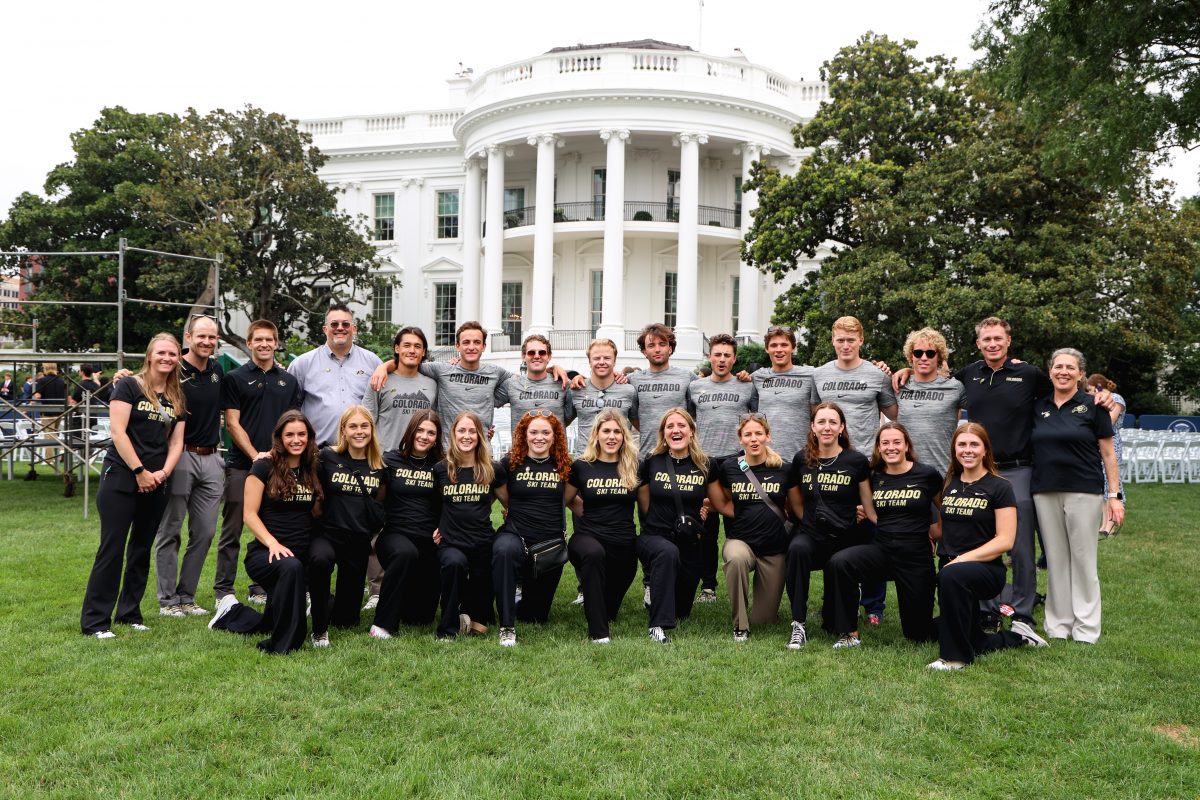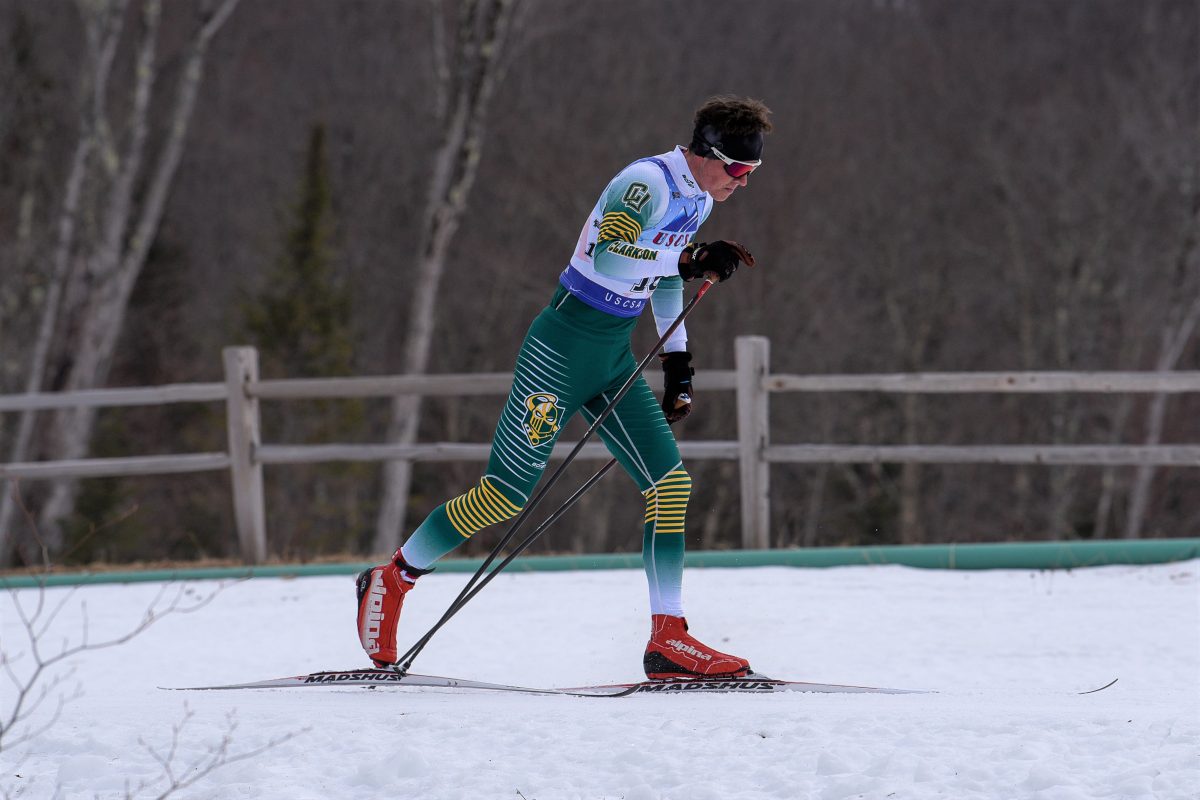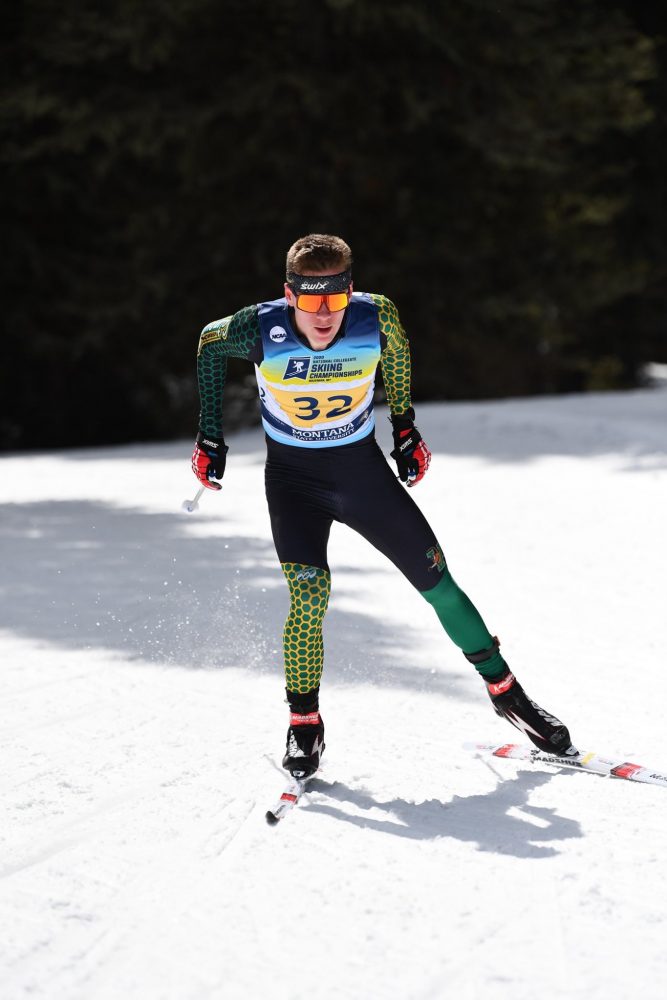
Alaska Pacific University’s (APU) 25-year-old Scott Patterson isn’t easily distracted. His is a busy schedule with a repetitive cycle like something out of the movie “Groundhog Day”. In Patterson’s case, the routine goes something like this: wake, eat, train, eat, work, train, sleep … repeat.
“My general plan is I try to put in about 25 hours a week,” Patterson said over the phone from his home base in Anchorage. Just so we’re clear, that’s 25 hours per week working as a mechanical engineer. Beyond aspiring to the highest levels of the sport, Patterson has worked for the same engineering firm for five years — two as an intern and three as a part-time employee. He focuses on ensuring oil and gas pipelines are up to spec and corrosion prevention.

If you think a classic-to-skate transition is tough, Patterson has dialed his training-to-work transitions.
“One of the things I’ve noticed is that I really kind of figured out how to nail down the transition, Patterson said. “I eat my food faster, driving in the car. Just like every single little thing is made to kind of streamline the day. And you’d probably say it’s a little OCD but it’s how I get through it, so it works for me.”
If you’re Patterson’s work boss, the question is has he clocked quality work time? If you’re Erik Flora, APU’s head coach, the question is has Patterson logged quality training? On average, Patterson said he trains two to two-and-a-half hours in the morning before a noontime arrival at work. He then trains another two to two-and-a-half hour block in the early evening. Amongst domestic skiers, he’s known to log a high volume of training hours.
Patterson was officially nominated to the U.S. Ski Team (USST) B-team last month. The cyclic pattern of training and work has borne fruit.
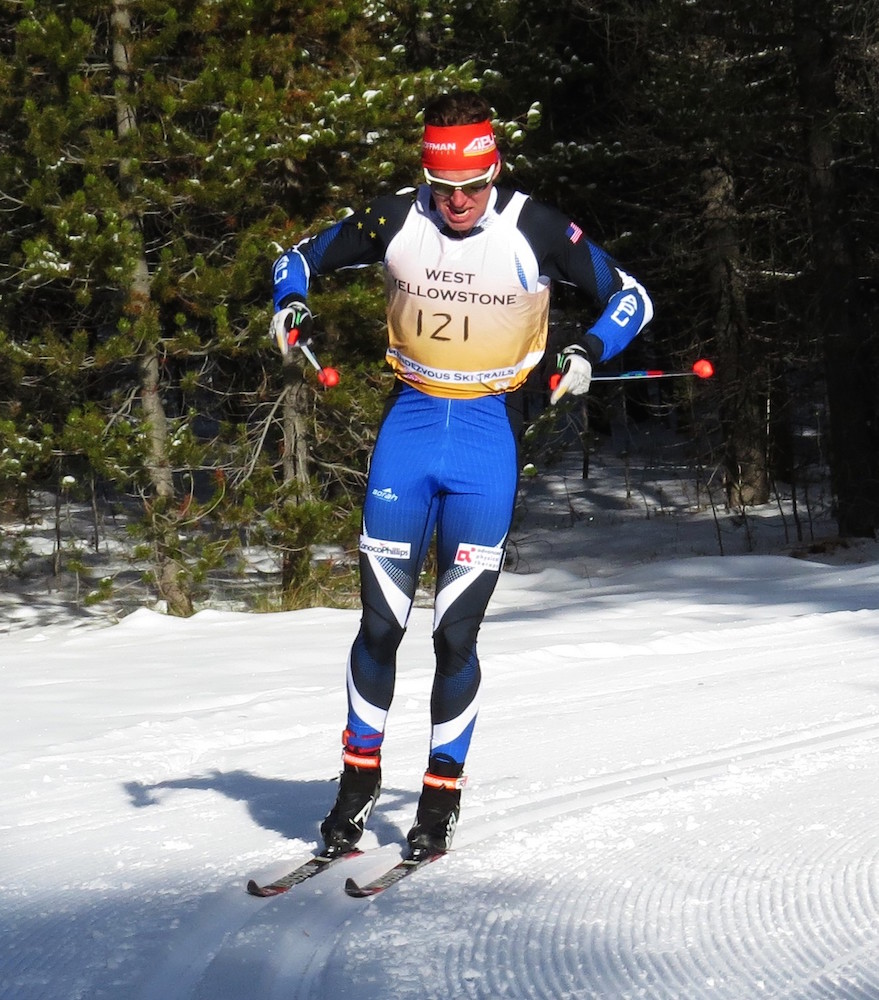
Patterson began this year’s SuperTour distance skiing campaign with a third place in the 15 k skate in West Yellowstone, Mont. Then a week later in an equally loaded domestic field, Patterson won the 15 k skate at the first NorAm of the season at Sovereign Lake in Vernon, British Columbia.
Primed for his major objective of the year, qualifying for World Championships, Patterson figured one stellar race at U.S. nationals in early January would punch his ticket to Finland. The 15 k skate at nationals didn’t go as planned; he placed 16th (1:25.9 minutes back from the winner). And on a tricky waxing day for the 30 k classic mass start, Patterson finished fourth, about 12 seconds behind third-place skier Kris Freeman.
“I was definitely pretty bummed out. … I got sick about two days before I jumped into the 15 k,” Patterson said. “It was rough. I was coughing up mucus the whole time and struggling .”
U.S. Ski Team Head Coach Chris Grover acknowledged in an interview last month that he wanted to extend Patterson an opportunity to race at the PyeongChang World Cup. His rationale was simple: of the domestic male skiers proving themselves in the early season, Patterson — having not qualified for World Championships — lacked a chance to test himself internationally.
Patterson made the most of his chances, skiing to two ninth places in PyeongChang, South Korea, and placing 28th in the Holmenkollen 50 k classic mass start in Oslo, Norway.
Two seasons ago, in 2015/2016, Patterson had 13 individual World Cup starts. His best results were 32nd in the Holmenkollen 50 k classic and the 38th fastest time on the day in the Ski Tour Canada’s 15 k skate pursuit. On the 2015/2016 SuperTour circuit, Patterson was consistent, winning the 15 k classic at 2016 U.S. nationals as well as another 15 k classic, and placing second and third in two 15 k skate races.
Fast forward to this past season, 2016/2017, and the World Cup starts granted Patterson weren’t exactly a lifeline, but a knock on the door. Having missed out on his goal for the year, Patterson still understood a USST nomination wasn’t an outlandish expectation.
“I was kind of thinking of it especially after Holmenkollen,” Patterson said. “Going into the year, I was hoping I could ski well enough, but after Holmenkollen, I was realizing that I had scored points a couple times. That is what Grover and I had talked about. If I can get a few more in Canada [at World Cup Finals] and show it at the end of the season that I am better than the domestic field, and then I figured I put my best foot forward with sickness and everything, that was the best I could do and hope for a nomination there.”
With a path still open, Patterson finished the Quebec City World Cup Finals 41st overall, with the 30th-best time of day in the 15 k freestyle pursuit.
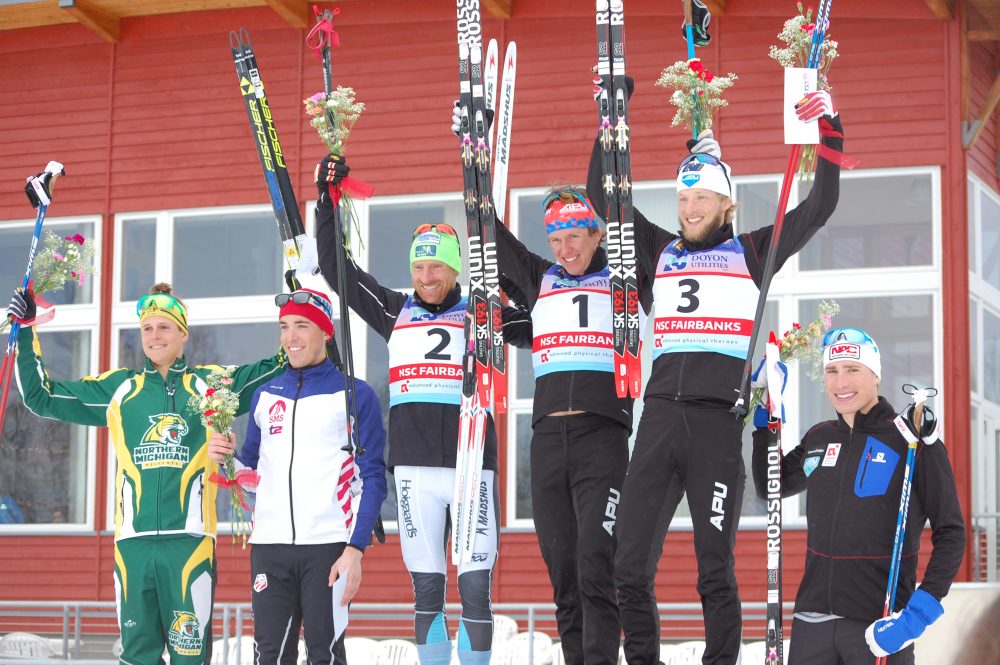
Patterson threw down an exclamation point to end the season at SuperTour Finals and U.S. Distance Nationals in Fairbanks, Alaska. He won both distance races — a 30 k skiathlon and 50 k skate mass start. When asked if he expected to dominate the domestic field in Fairbanks, Patterson was quick to answer.
“Not at all,” Patterson said. “That 30th place in Quebec, I kind of felt like I was faking it for the whole race. I wasn’t quite sure where my fitness was. I did a lot of leading got the pack, it was myself and Florian Notz from Germany kind of leading most of the race and David [Norris] and Paddy [Caldwell] both pulled some pretty good results out of our pack. Leading that pack, I was never like I am feeling great. I was kind of like, ‘Well, I am leading, I guess I should try hard and make it look like I am feeling good.’ I had no idea going into Fairbanks. Even that first race, the classic [leg] felt all right. I wasn’t sure I could handle the pace very well [and] I wasn’t sure that I could really push it further. But in the skate [leg], things clicked perfectly.”
Patterson was informed of his USST nomination in April. For now, he said, not much will change.
“It means that I am going to a few more camps,” Patterson said. “I have to leave Alaska a few more times. Over the years, I have figured out what works for me. Flora has learned what works for me, too. We are proceeding along the same path regardless of the nomination. The nomination just gives a few extra resources. All that is a good thing.”
Patterson also said he intends to race a full World Cup schedule, but currently his race schedule remains a work in progress. As far as early season objectives, Patterson is eyeing the World Cup 30 k skiathlon on Dec. 3 in Lillehammer, Norway.
“And then I’d like to overall, definitely be in the top 50 … make those Olympic criteria for the World Cup,” he said.
Jason Albert
Jason lives in Bend, Ore., and can often be seen chasing his two boys around town. He’s a self-proclaimed audio geek. That all started back in the early 1990s when he convinced a naive public radio editor he should report a story from Alaska’s, Ruth Gorge. Now, Jason’s common companion is his field-recording gear.

